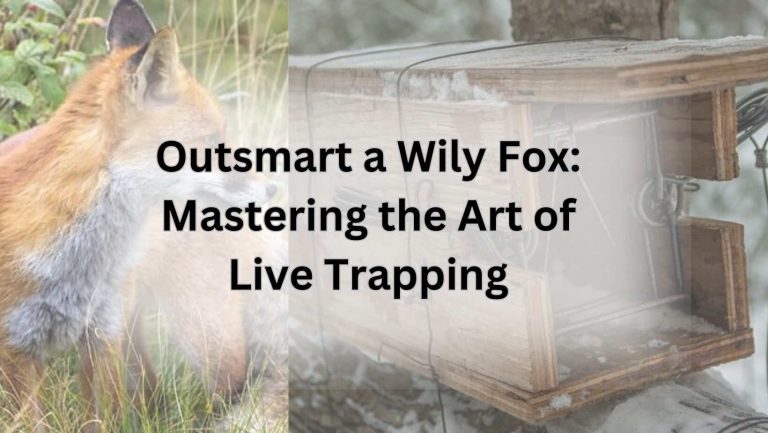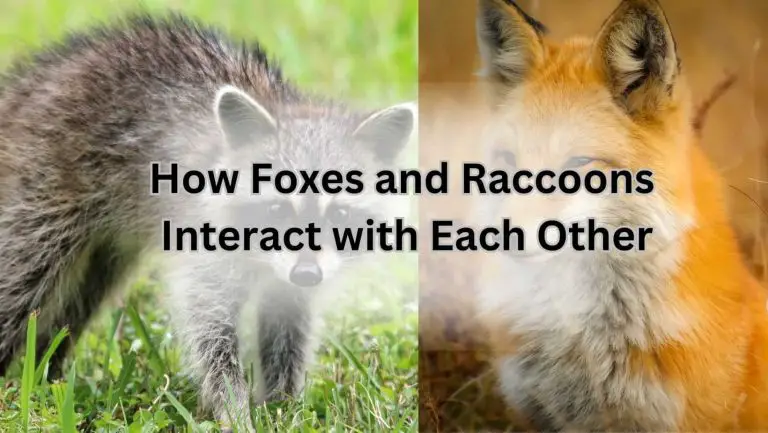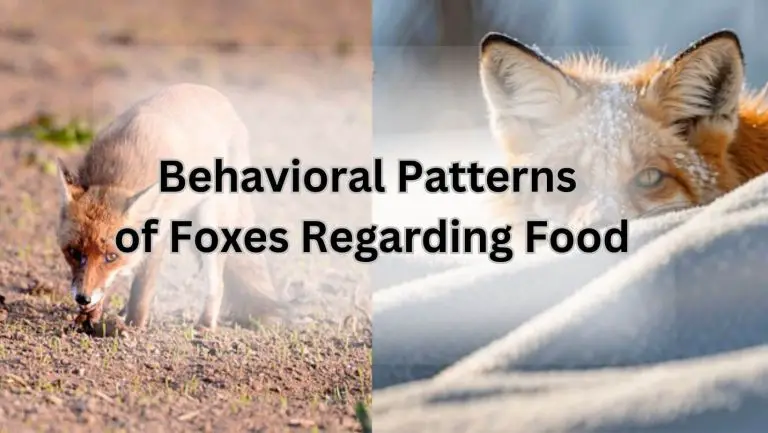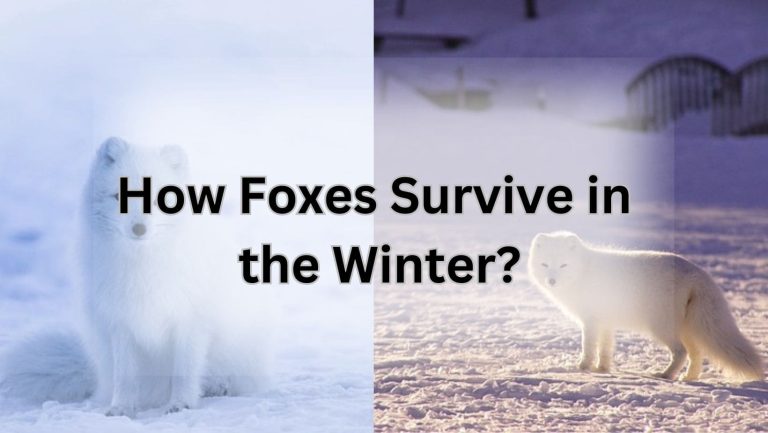Just How Clever Are Foxes? Unveiling Their Genius Tricks!
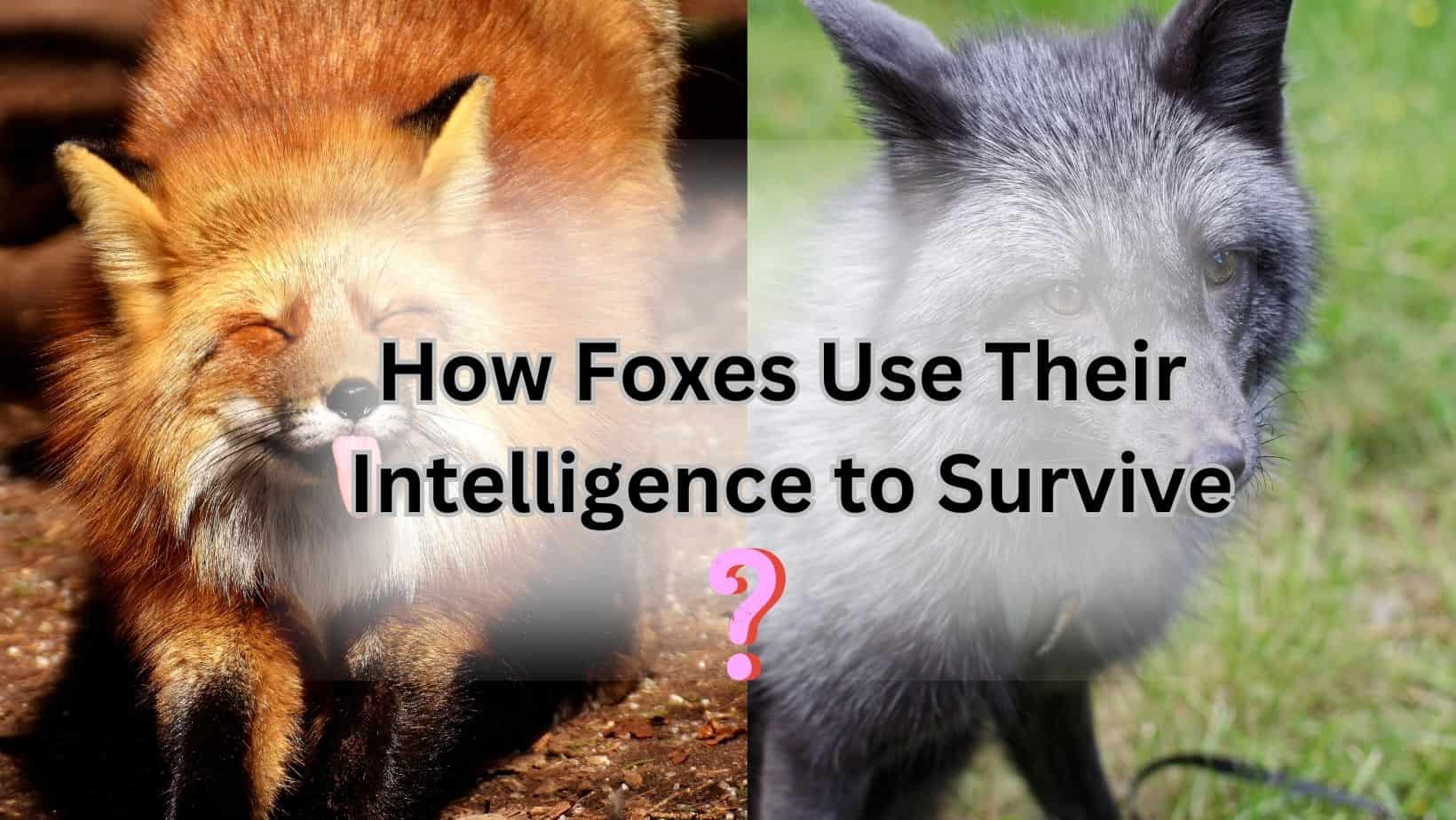
Intelligence of Foxes
How smart is a fox? Well, let’s dive into the fascinating world of these cunning creatures and explore their intelligence from a cognitive perspective, problem-solving skills, and adaptability in various environments.
Cognitive Abilities
Have you ever wondered how foxes stack up in the smarts department compared to other animals? Foxes are known for their remarkable cognitive abilities, making them stand out in the animal kingdom. Their keen sense of observation, memory retention, and ability to learn from past experiences contribute to their overall intelligence. These clever creatures can adapt to changing situations and environments, showcasing their cognitive prowess.
Problem-Solving Skills
Can foxes crack the code when faced with tricky situations? Absolutely! Foxes are renowned for their exceptional problem-solving skills, which come in handy when hunting for food or outsmarting predators. Their quick-witted nature allows them to devise creative solutions to challenges they encounter in the wild. From navigating complex terrain to outmaneuvering prey, foxes demonstrate their cleverness through their problem-solving abilities.
Adaptability in Various Environments
How do foxes fare in different habitats and climates? Foxes are highly adaptable creatures that thrive in a variety of environments, from forests to urban areas. Their ability to adjust to changing conditions, find food sources, and evade danger showcases their resourcefulness and intelligence. Whether it’s blending into their surroundings or utilizing their surroundings to their advantage, foxes exhibit a remarkable level of adaptability that speaks to their smart nature.
Fox Behaviors
Hunting Strategies
Have you ever wondered how smart foxes are when it comes to hunting? Well, let me tell you, these furry creatures are absolute geniuses when it comes to catching their prey. Foxes use a combination of stealth, speed, and cunning to outsmart their targets. Their keen sense of hearing allows them to detect the slightest rustle of leaves, while their agile bodies enable them to pounce on their unsuspecting prey with lightning speed. Foxes are known to employ various hunting strategies, such as stalking, ambushing, and even playing dead to lure in their victims. It’s no wonder they are such successful hunters in the wild!
Social Interactions
Do foxes have good social skills, or are they loners? Well, let me tell you, foxes are actually quite social creatures. While they may be solitary hunters, they do form strong bonds with their family members. Foxes live in small family groups called “leash,” which consist of a dominant male, his mate, and their offspring. Within these family units, foxes exhibit complex social behaviors, such as grooming each other, playing together, and even sharing food. They communicate through a series of vocalizations, body language, and scent marking, which helps them maintain their social hierarchy and coordinate their activities.
Communication Skills
How do foxes communicate with each other? Well, let me tell you, foxes are excellent communicators. They use a combination of vocalizations, body language, and scent marking to convey messages to their family members and other foxes in the area. Foxes are known to bark, growl, scream, and even purr to express their emotions and intentions. They also use their tails, ears, and facial expressions to communicate non-verbally. Additionally, foxes mark their territories with urine and feces to send olfactory signals to other foxes. These communication skills are essential for maintaining social bonds, establishing territories, and coordinating group activities in the wild.
Fox Instincts
Survival Instincts
Did you know that foxes are equipped with incredible survival instincts that help them thrive in the wild? These cunning creatures have a keen sense of smell, sharp hearing, and excellent night vision, allowing them to outsmart their prey and evade predators. Their ability to adapt to different environments and find food sources makes them true survivors in the animal kingdom.
Maternal Instincts
Have you ever wondered how foxes take care of their young? Foxes exhibit strong maternal instincts, with mother foxes diligently caring for their pups and teaching them essential survival skills. From building cozy dens to hunting for food, these furry moms go above and beyond to ensure the well-being of their offspring. It’s heartwarming to see the bond between a mother fox and her babies.
Instinctual Responses to Threats
When faced with danger, how do foxes react? These quick-witted creatures have instinctual responses to threats, such as using their agility to escape or their cunning to outsmart predators. Foxes are known for their clever tactics, such as playing dead or hiding in burrows to avoid danger. Their ability to assess risks and make split-second decisions is truly impressive.
As a Canid Wild Life Lover with 20 years of experience, I have witnessed firsthand the remarkable instincts of foxes in the wild. From their survival strategies to their maternal care, foxes never cease to amaze me with their intelligence and resourcefulness. Whether you’re studying these fascinating animals or considering getting a fox as a pet, understanding their instincts is key to appreciating their unique qualities. So, next time you spot a fox in the wild, take a moment to admire their instincts at work – you might just learn a thing or two from these clever creatures.
Fox Learning Capacity
Ability to Learn from Experience
Ever wondered how smart those sly foxes really are? Let’s dive into their learning capacity and see what makes them such clever creatures. Foxes have the incredible ability to learn from their experiences, adapting and improving their behaviors over time. From hunting techniques to navigating their environments, these cunning canids are always honing their skills. Their keen observational skills and sharp instincts allow them to learn quickly and efficiently, making them formidable predators in the wild.
Observational Learning Skills
Do foxes have a knack for picking up new skills by watching others? Absolutely! These quick-witted animals excel at observational learning, meaning they can observe and imitate behaviors they see in their surroundings. Whether it’s learning how to hunt from their parents or figuring out how to navigate obstacles, foxes are always watching and learning. This ability to learn from others sets them apart as intelligent and adaptable creatures in the animal kingdom.
Memory Retention and Recall
How good are foxes at remembering important information? Foxes have impressive memory retention and recall abilities, allowing them to remember crucial details about their environment, prey, and social interactions. This helps them make informed decisions and adapt their strategies based on past experiences. Whether it’s remembering where they stashed their food or recognizing familiar hunting grounds, foxes rely on their sharp memories to thrive in the wild. So, next time you encounter a fox, remember that they’re not only sly but also have an excellent memory to match!
In conclusion, foxes are truly remarkable animals with a remarkable capacity for learning and adapting. Their intelligence and quick thinking make them fascinating creatures to observe in the wild. So, the next time you see a fox darting through the forest, take a moment to appreciate the cleverness and resourcefulness of these incredible animals.
How Smart is a Fox?
Creative Solutions
Ever wondered how a fox can outsmart its prey or even humans? Well, let me tell you, these cunning creatures have a knack for coming up with creative solutions to tricky situations. Whether it’s figuring out how to access hard-to-reach food sources or outmaneuvering predators, foxes are experts at thinking outside the box. Their resourcefulness and quick thinking make them formidable opponents in the wild.
Adaptation to New Challenges
Have you ever seen a fox face a new challenge and adapt to it seamlessly? These clever creatures have a remarkable ability to adapt to changing environments and circumstances. Whether it’s a shift in their food source or a change in their habitat, foxes are quick to adjust and find innovative solutions to thrive. Their adaptability is a testament to their intelligence and survival instincts.
Strategic Thinking Abilities
Do you think foxes just rely on instinct to survive in the wild? Think again! These strategic thinkers are constantly assessing their surroundings and planning their next move. From scouting out the best hunting grounds to strategically avoiding predators, foxes exhibit impressive strategic thinking abilities. Their ability to anticipate and plan for future events sets them apart as highly intelligent animals.
So, next time you spot a fox darting across a field or cleverly outmaneuvering a predator, remember that you’re witnessing the brilliance of a truly smart and resourceful creature. Foxes may be known for their sly and cunning nature, but their intelligence and adaptability make them truly fascinating animals to observe in the wild. Keep an eye out for these quick-witted creatures, and you might just be amazed at the clever solutions they come up with to navigate the challenges of their environment.
Fox Communication
Vocalizations
Have you ever wondered how foxes communicate with each other? Well, let me tell you, these clever creatures have quite a repertoire of vocalizations. From barks and screams to growls and howls, foxes use a variety of sounds to convey different messages. Their high-pitched screams are especially eerie and can be heard echoing through the night. So, next time you hear a fox scream, remember they’re just having a little chat with their foxy friends.
Body Language
Did you know that foxes are masters of body language? They use subtle movements like tail flicks, ear positions, and eye contact to communicate with each other. For example, a fox may flatten its ears and tuck its tail between its legs to show submission, while a confident fox will hold its tail high and prance around proudly. It’s like they’re speaking a whole different language without saying a word!
Scent Marking and Signaling
Ever noticed a strong musky smell while hiking in the woods? That’s probably a fox marking its territory. These resourceful creatures use scent marking to communicate with other foxes and establish boundaries. By leaving their scent behind on rocks, trees, and bushes, foxes can let others know who’s boss in the neighborhood. It’s like leaving a little “No Trespassing” sign for other animals to see.
And there you have it, the fascinating world of fox communication. From vocalizations to body language and scent marking, these clever critters have a whole arsenal of tricks up their sleeves to stay connected with their fellow foxes. So, next time you see a fox in the wild, pay attention to how they communicate – you might just learn a thing or two about their cunning ways.
Fox Social Structure
7.1 Family Dynamics
Ever wondered how a fox family operates? Well, let me tell you, it’s quite fascinating! The family dynamics of foxes are truly remarkable. A typical fox family consists of a mated pair (usually monogamous) and their offspring from previous years. The parents work together to raise their young, teaching them essential survival skills like hunting and grooming. It’s like a little fox school in the wild!
7.2 Hierarchical Systems
Do foxes have a pecking order? Absolutely! Foxes establish a hierarchical system within their groups, with dominant individuals asserting their authority over subordinates. It’s like a furry little power struggle out there in the fox world. The hierarchy is crucial for maintaining order and ensuring that resources are distributed fairly among the group.
7.3 Cooperation and Collaboration within Groups
Do foxes work together as a team? Surprisingly, yes! While foxes are known for their cunning and independent nature, they also exhibit remarkable levels of cooperation and collaboration within their groups. They often hunt in packs, using strategic tactics to catch their prey. It’s like watching a well-oiled machine in action, with each member playing a vital role in the hunt.
So, there you have it – a glimpse into the intricate social structure of foxes. From family dynamics to hierarchical systems and cooperative behavior, these clever creatures never cease to amaze with their intelligence and adaptability in the wild. Next time you see a fox trotting through the forest, remember the complex social world they inhabit and the fascinating interactions that play out among these furry friends.
Fox Hunting Techniques
Stalking Prey
Have you ever wondered how foxes manage to sneak up on their prey without making a sound? Well, let me tell you, these cunning creatures have mastered the art of stalking. Foxes use their keen senses of sight, smell, and hearing to carefully track their prey, moving silently and stealthily through the underbrush. Their ability to blend into their surroundings with their fur coats also plays a crucial role in their stalking techniques.
Ambush Strategies
Picture this: a fox lying in wait, hidden amongst the foliage, patiently waiting for the perfect moment to strike. Foxes are experts at using ambush strategies to catch their prey off guard. They will patiently wait for the right opportunity to pounce, using their lightning-fast reflexes to secure a successful hunt. Their patience and precision in executing ambushes make them formidable hunters in the wild.
Utilization of Surroundings for Hunting
Ever noticed how foxes adapt their hunting techniques based on their surroundings? These resourceful creatures are known for their ability to utilize their environment to their advantage. Whether it’s using rocks or fallen logs as cover, or strategically positioning themselves near burrows or dens, foxes are always one step ahead when it comes to hunting. Their adaptability and quick thinking make them highly effective predators in their natural habitat.
In the wild world of fox hunting, these clever canines truly shine. From stalking their prey with ninja-like precision to executing ambushes with expert timing, foxes have mastered the art of hunting. So next time you see a fox darting through the undergrowth, remember that behind those sly eyes lies a skilled and intelligent hunter.
Fox Environmental Adaptations
9.1 Camouflage Abilities
Have you ever wondered how a fox manages to blend in so effortlessly with its surroundings? Well, let me tell you, their camouflage abilities are truly remarkable. Foxes have evolved to have fur that matches the colors of their environment, whether it’s the lush greenery of a forest or the snow-covered plains of the Arctic. This allows them to remain hidden from predators and sneak up on their prey with ease. Next time you spot a fox in the wild, take a moment to appreciate their incredible camouflage skills.
9.2 Navigational Skills
How does a fox always know how to find its way back home? It’s all thanks to their exceptional navigational skills. Foxes have an innate sense of direction and can remember intricate details of their surroundings, such as landmarks and scent trails. This allows them to navigate through complex terrains with ease, whether they’re hunting for food or simply exploring their territory. It’s like they have a built-in GPS system that never fails. Maybe we could all use a little bit of fox navigation skills in our lives!
9.3 Survival Tactics in Harsh Conditions
Imagine being able to survive in the harshest of conditions, from scorching deserts to freezing tundras. Well, foxes have mastered the art of survival in even the most unforgiving environments. They are resourceful creatures that can adapt to changing circumstances, whether it’s finding shelter in a burrow during a storm or scavenging for food in barren landscapes. Their ability to thrive in harsh conditions is a testament to their intelligence and resilience. Next time you think you’re having a tough day, just remember the fox out there braving the elements like a true survivor.
Fox Survival Skills
Food Storage Techniques
Have you ever wondered how a fox manages to store its food for later? Well, let me tell you, these clever creatures have some impressive techniques up their sleeves. Foxes are known for their ability to cache food by burying it underground, covering it with leaves or dirt to keep it hidden from other animals. This not only helps them survive when food is scarce but also showcases their intelligence in planning ahead for the future.
Shelter Building
Do you think foxes are just cute and fluffy animals? Think again! These resourceful creatures are excellent at building shelters to protect themselves from harsh weather conditions and predators. Foxes often dig burrows underground or repurpose abandoned dens to create safe havens for themselves and their young. Their ability to construct these shelters highlights their adaptability and survival instincts in the wild.
Response to Changing Environments
How do foxes adapt to changing environments? Foxes are quick-witted animals that can easily adjust to new surroundings and challenges. Whether they are faced with urban development encroaching on their natural habitat or changes in prey availability, foxes are known for their ability to thrive in various environments. Their cunning nature allows them to find innovative solutions to survive and thrive in the ever-changing world around them.
As a Canid Wild Life Lover with 20 years of experience, I have witnessed firsthand the remarkable survival skills of foxes in the wild. From their food storage techniques to their shelter-building abilities, these intelligent creatures never cease to amaze me. Foxes truly are a testament to the ingenuity and resourcefulness of the animal kingdom.
So, next time you come across a fox in the wild, take a moment to appreciate the intelligence and cunning nature of these remarkable animals. They may be cute and fluffy on the outside, but underneath it all, they possess a level of intelligence and adaptability that is truly awe-inspiring.





